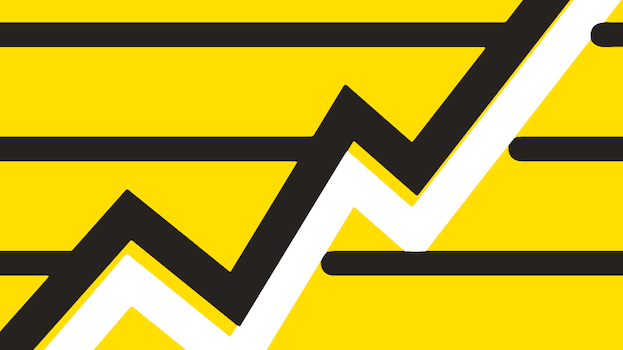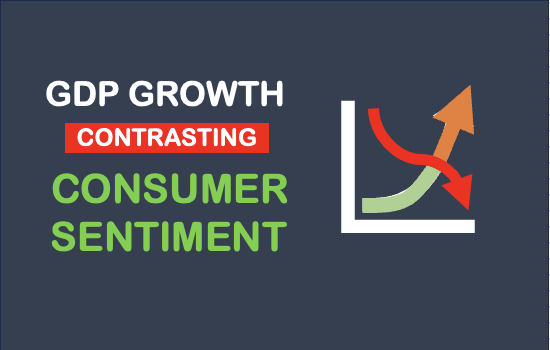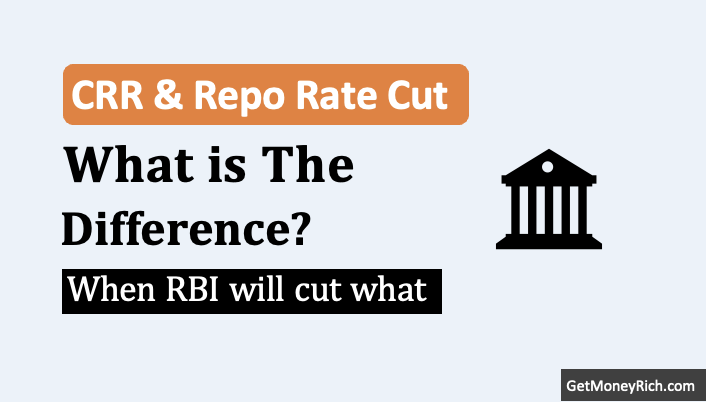Recently, I’ve read an excellent news article published on Moneycontrol. It is about oil supply dynamics and how they’re shaking things up in what folks are calling the “new world order.” It’s a big and complicated topic, but don’t worry, I’m here to declutter it down so that you know what’s going on without drowning in jargon. I personally found this article very helpful as it explains a lot about global oil supplies and its impact on the world. The best part of the article was how well it integrated the new word order with the oil supplies. So allow me to proceed with my explanatory blog post.
Oil’s Wild Ride in 2025
Crude oil prices (specifically WTI) have dropped -18% since March’2024 (1 Year).
What is WTI? West Texas Intermediate (WTI) is a type of crude oil used as a benchmark for pricing oil in the United States, known for its high quality and low sulphur content. It’s primarily produced in Texas and nearby states, and its price, often quoted in dollars per barrel, reflects supply and demand trends in the global oil market.
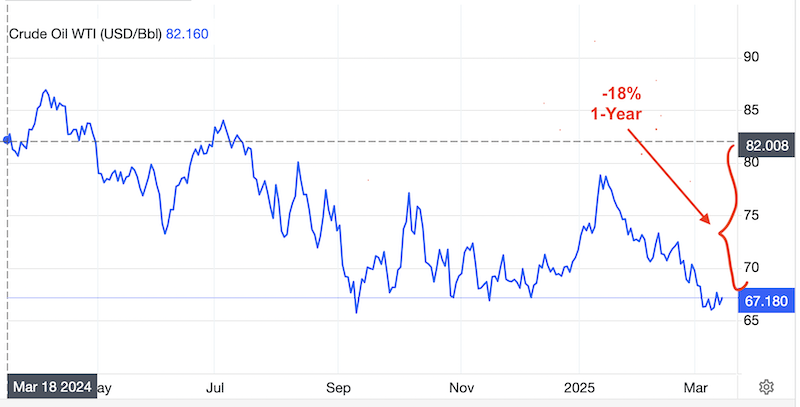
That’s a pretty steep slide. You might think, “Great, cheaper gas”, yes it’s true, but there’s a lot more going on behind the scenes.
The new article explains that this drop is tied to a mix of weak demand (of crude oil) and a shifting supply dynamics (who’s pumping oil and how much). It’s like a global tug-of-war, and the players are countries like the US, Russia, Saudi Arabia, and even India (we’re in the mix too).
So, what’s driving this? Let’s me explain this in a simple way in step by step manner.
Russia’s Comeback: From Sanctions to Supply
First up, Russia.
If you’ve followed the news, you know that Russia has been under heavy sanctions since the Ukraine war kicked off. But here’s the twist, with a possible deal between Ukraine, Russia, and the US on the horizonm fueled by some Trump-Putin camaraderie, those sanctions might ease up.
What does that mean? Russia could pump out an extra half a million barrels per day (bpd) of crude oil back into the global market. That’s a lot of oil.
Now, here’s where it India comes into picture.
Since the war started, India’s been buying a ton of discounted Russian oil. About 37% of their exports last year landed on our shores. It’s been a sweet deal, keeping our fuel costs lower. But if Russia starts selling more globally, we might have to compete with others and shift to pricier oil from places like the US or the Middle East.
In fact, the news article mentions a dip in Russian oil imports to India in February 2025, down 11% from the month before.
So, while the world might cheer Russia’s return, our (India’s) wallets might feel a little pinch.
OPEC+ Turns Up the Tap
Next, let’s talk about OPEC+. It is the club of oil-producing countries like Saudi Arabia and Russia.
On March 3, 2025, OPEC decided to undo some production cuts they’d made earlier. It’ll add about 2.2 million bpd back into the mix by September 2026. That’s a 5% bump in their output. Saudi Arabia and the UAE are leading the charge, with their production set to rise by 7% and 10%, respectively.
Why now? Well, part of it’s politics, think “Trump’s oil diplomacy” pushing for lower prices, and part of it’s opportunity.
With Iran facing stricter export bans (losing 1.6 million bpd) and Venezuela’s oil exports taking a hit (down 220,000 bpd), OPEC+ sees a gap they can fill. More oil from them could keep prices from spiking, but it also depends on whether demand picks up.
Right now, that’s looking shaky, more on that later in this article.
The US Drilling More Oil
Across the pond, the US is flexing its oil muscles big time. Over the last decade, their production has jumped 50%.
They’re exporting almost as much as Russia did before sanctions, around 4.9 million bpd in 2024. The Energy Information Administration thinks they could add another 200,000 bpd in 2025 if prices hold steady.
And remember this, the new US Treasury Secretary, Scott Bessent, has a wild dream of boosting production by 3 million bpd in the next four years.
But here’s the catch, oil prices have to make sense for drillers.
The Moneycontrol article cites a survey saying US shale producers need $59-70 per barrel to break even on new wells. Prices have dipped below that lately, but the US Energy Secretary swears they can still pump at $50 a barrel, thanks to better tech (like refracturing old wells) and deregulation (like tax breaks).
If they pull it off, it’s more oil flooding the market, which could keep prices low, or even push them lower.
Shipping Gets Smoother (Sort Of)
Oh, and let’s not forget the logistics angle.
Moving oil around the world isn’t cheap, especially when shipping routes like the Red Sea (middle east) get dicey.
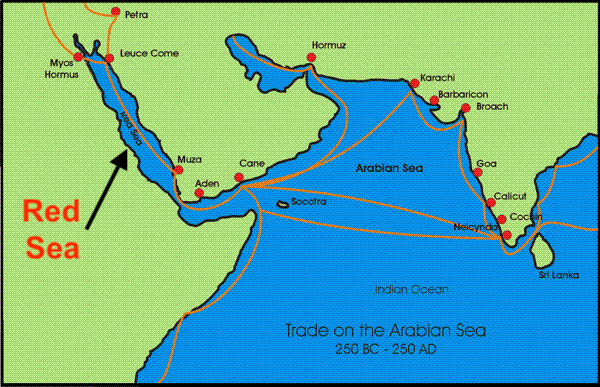
But the good news? Things have calmed down over the last 7-9 months. Shipping rates for massive oil tankers dropped 20-30% late last year, though they spiked again in January 2025 when the US cracked down on Russia’s “shadow fleet” (sneaky ships dodging sanctions).
Still, with lower fuel costs and some routes reopening, freight prices might ease up soon, especially if that US-Russia deal happens.
Cheaper shipping = cheaper oil, which sounds like a win for everyone.
Let’s Discuss The Demand Side
Here’s where it gets tricky, all this extra oil doesn’t mean much if no one’s buying it.
Big economies like China and Europe are slogging through weak consumption right now. Why? Because in these countries there is slower growth, less driving, and factories operating at smaller capacities.
Even in the US, unemployment’s creeping up, and financial markets are jittery, which could dampen energy use.
The article estimates that if demand stays flat, we’re looking at an extra 710,000 bpd of oil sloshing around soon. Check out the breakdown of where this supply is coming from (and going):

If demand tanks, prices could slide below $60 a barrel.
What’s the Score? A Price Prediction
So, where’s this all headed?
The folks at Moneycontrol think oil prices (WTI) could bounce between $55 and $70 a barrel over the next 3-12 months.
That’s a pretty wide range, but it hinges on how these supply shifts play out. If Iran’s oil gets squeezed out faster than expected and no one fills the gap, prices could climb. But with Russia, the US, and OPEC+ pumping more, the odds lean toward lower prices, unless demand suddenly roars back.
The India’s Angle
Alright, let’s bring it home.
India imports a ton of oil, about 85% of what we use, so these global shifts hit us hard.
The article pulls out an old Reserve Bank of India stat: every $10 drop in oil prices shaves 43 points off our current account deficit and 49 points off retail inflation.
It means, cheaper oil means a stronger rupee, lower fuel costs, and maybe even room for the government to cut taxes or the central bank to tweak interest rates.
For you and me, that could mean cheaper gas at the pump, lower airfares (airlines love cheap oil), and maybe even some relief on everyday stuff like packaged goods or medicines (oil’s in a lot of plastic and chemicals).
Businesses like manufacturing, logistics, and retail could see a boost too. But if we lose that sweet Russian discount, some of those gains might get nibbled away. It’s a balancing act.
Conclusion
So, there you have it, the oil world’s in flux, and it’s a messy, fascinating puzzle.
Russia’s back in the game, OPEC+ is drilling more, the US is pushing hard, and shipping’s smoothing out, just as demand’s looking wobbly.
For us in India, it’s a mixed bag, lower prices could be a lifeline, but we’ve got to take leverage from some foreign-relations to keep the benefits flowing.
What do you think? Are you feeling optimistic about cheaper fuel, or worried about the bigger economic ripples? Post your views in the comments.
[Note: I think, for we stock investors, this news of lower oil prices, potentially ranging from $55-70 per barrel, will be a boon. It may ease inflation pressures and boost sectors like manufacturing, airlines, and logistics, driving up their stock values. However, if India shifts away from discounted Russian oil to pricier alternatives, energy import costs could rise, squeezing margins for oil-dependent firms and creating some uncertainty in the market.]
Have a happy investing.


